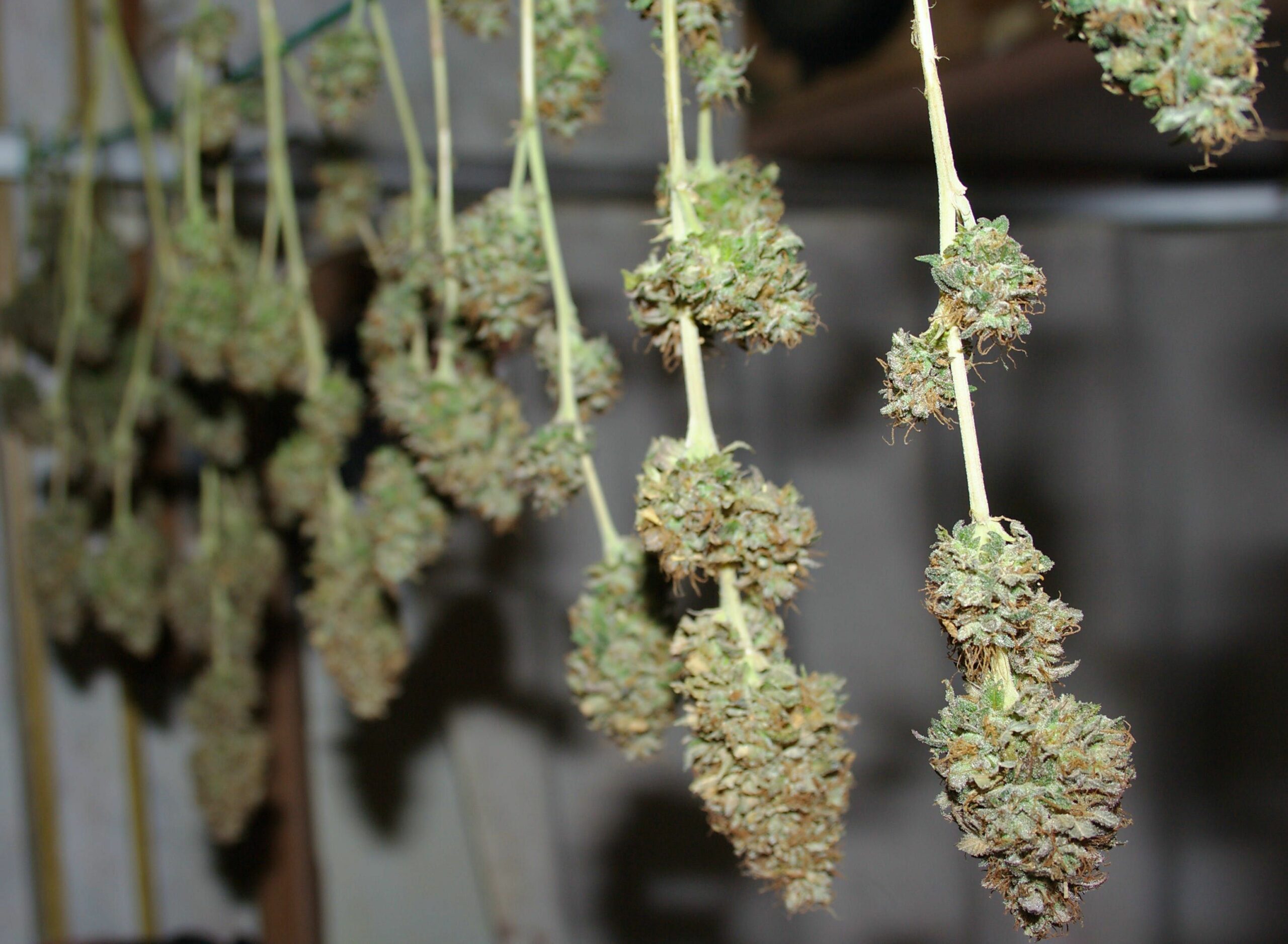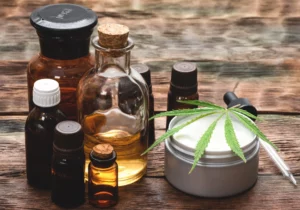Indica, sativa, hybrid—when it comes to describing cannabis, are these terms outdated? It seems so, according to geneticist Mowgli Holmes, who gave a talk called The Genetics of Cannabis Breeds at the University of California Berkeley Botanical Garden. His company Phylos Bioscience is pursuing the lofty goal of mapping cannabis’s genetic history by sequencing the DNA (deoxyribonucleic acid) of every marijuana strain they can get their hands on.
“If you go into a dispensary today, people will tell you, you can buy an indica or sativa or a hybrid, but that’s actually not a real thing. If there were ever discrete varieties like that, they’re gone now—they’ve just been bred out of existence,” he says.
FOLLOW US ON FACEBOOK & INSTAGRAM
Cannabis Landrace Strains 101
If referring to cannabis strains as indica, sativa and hybrid is incorrect, how did we get to where we are now, using them in our daily cannabis lexicon? To answer this question, we have to look back at cannabis’s evolutionary history.
Scientists like Mowgli believe cannabis was domesticated in Central Asia around 8,000 BC. From there, humans brought the plants with them in their migrations across the globe.
In each area where humans settled down and cultivated cannabis, they selectively bred plants for their specific needs such as oil, fiber and yes—even psychoactivity. According to Mowgli, the selective breeding of plants can be thought of as arranged marriages. “People pick things they like and put them together,” he says.
Over time, as humans married desirable plant to desirable plant in their respective region, their cannabis crops developed distinct physical characteristics, and today are known as landrace varieties.
These varieties are the ancestors to all modern strains on dispensary shelves today. You may have even heard of some of them. For example, Thai landraces have characteristics that we normally associate with sativas—the plants grow tall and lean with narrow leaves and are considered energizing in effect. Landraces from Afghanistan have traits that we tend to think of as indica—they’re small, bushy, broad-leafed and sedating.
In the mid-1700s, naturalists Carl Linnaeus and Jean-Baptiste Lamark incorrectly dubbed these landrace varieties as two separate species: Cannabis sativa and Cannabis indica, respectively, based off of their morphological characteristics. Though we now know that all cannabis is one species, Cannabis sativa, this way of thinking about cannabis has been around for decades.
If you’re referring to landrace varieties as indica and sativa in the context of their physical traits, you’d be somewhat correct. But to use these terms when purchasing modern strains—especially when you’re looking for a particular effect—doesn’t make a lot of sense, says Mowgli.
The problem, he says, is that some dispensaries and breeders will base their indica-sativa-hybrid product labels off of looks alone. And from what his work in cannabis DNA analysis has shown him, that logic has no basis.
“You can have a tall plant with broad leaves that’s sedating, or you can have a short plant that’s energetic and has broad leaves. You can have all these different combinations, but there’s no reason why any of these traits would go together,” says Mowgli.
He adds that if growers and shop owners were to base their labels on observed effects based on a large sample of people, or via a thorough chemical analysis, then the indica-sativa labeling would be a “good shorthand for what’s going to put you to sleep or make you want to clean the house.” However, he noted that it’s not clear and consistent how people are classifying their products.
Deciphering the Cannabis Family Tree
Every plant is made up of cells, and in these cells is DNA, genetic material that acts as a code for how a plant is going to mature. “[DNA] is kind of a barcode—an identity measure. Every organism has a unique sequence of DNA,” says Mowgli.
Mowgli’s work at Phylos centers around looking at the DNA of thousands of cannabis samples to tell a story about the plant’s evolutionary history—and in the long run, help people figure out what exactly it is they’re consuming.
To undertake this goal, Mowgli and his team are looking at the DNA from cannabis samples sent to him from people across the world. When he initially started this project, he and his team assumed that as they sequenced this DNA, they’d find clear-cut relationships that could be traced back to landrace varieties. However, this was not the case.
“We had hoped … that we would get a sort of elegant, tree-like structure that would really make it clear what everything was in some ways,” he says. “But because of all of this hybridization, it’s this messy, intertwined hairball.”
Instead of having a distinct family tree, Mowgli and his team ended up with the Phylos Galaxy, which can be accessed by anyone online. Expressing his data as a galaxy was the only way Mowgli could conceivably portray the diversity and relationships between all of the cannabis samples he’s sequenced.
Even though the Phylos Galaxy is a tangled mess, it has valuable information that lets us see what’s happening. Each star in the galaxy represents a single sample, and each sample’s distance from another sample denotes how closely related the two are.
Instead of clear-cut landrace lineages, what Mowgli and his team have are clusters that correspond to modern categories: There’s a cluster of samples centered around Skunk, a famous variety of cannabis that was initially bred in Holland in the 1970s. There are also clusters corresponding to high CBD, berry and OG Kush—another famous variety of cannabis that’s sold as a strain in dispensaries.
Modern Cannabis Is the Product of Historical, Environmental & Genetic Factors
Why is this galaxy such a mess? As with most things involving cannabis, it’s complicated with multiple factors like history, environment and genetics at play.
One of the reasons for this outcome is what Mowgli dubs the “California convergence.” In the 1960s, people started crossing different varieties with each other, creating the strains we know today. Because of this intermingling, most of the original landrace varieties that may have existed in the 1960s and 1970s are gone.
And those indica and sativa characteristics? They’re all mushed together and carry little meaning in today’s cannabis world.
The environment that a plant is grown in can affect the amount of chemically active constituents—like tetrahydrocannabinol (THC), cannabidiol (CBD) and terpenes—that the plant can produce. So even if you had two genetically similar plants, the amount of sunlight, water and nutrients that each plant is exposed to will make them different. This can cause growers to think that they have two different types of cannabis, when in fact their plants are genetically identical.
RELATED: HARNESSING THE POWER OF CANNABIS’S CHEMICAL COMPOUNDS
If this wasn’t complicated enough, most cannabis seeds are genetically distinct. If you were to buy a pack of seeds, of say, Super Silver Haze and plant each seed, each plant that grows would be genetically different—regardless of what name you give it: “They’re all unique children of two different parents, just like humans are all unique,” Mowgli says.
In other plants—like corn—that humans have been developing for years, we’ve made all seeds of certain varieties identical through decades and decades of inbreeding. Such isn’t the case with cannabis. If you want cannabis plants that are genetically similar, you have to buy a clone, a cutting from a plant that will automatically be genetically identical.
Together all of these factors contribute to the chaos that’s reflected in the Phylos Galaxy. According to Mowgli, there’s pattern in the chaos—there are big clusters in the galaxy that respond to clonal varieties being passed around among farmers. These clusters have anywhere from 20–30 samples of the same plant.
“That’s a strain—if you want to call it that,” he says. “But there’s really no such thing as a strain—there are only clonal varieties. There are no real seed lines in cannabis, even though people kind of act like there are.”
How Will We Talk About Cannabis in the Future?
It’s clear that cannabis is a complex plant—and to make products that are reliable in the face of this complexity will be difficult. Compound this with the diverse ways humans respond to cannabis, and you could say that by bringing cannabis to the mainstream we’ve “bit off this huge problem that we’re going to be solving for a long time,” says Mowgli.
Mowgli uses DNA to figure out how different cannabis samples are related to each other, but this same DNA also codes for other things, like the ratio of THC to CBD plants will produce. So in order to decipher cannabis’s complexities, he wants to take these DNA sequences and map them against different chemical compositions and plants traits. This way, we’ll be able to intelligently breed plants that have the right combinations of phytocannabinoids and terpenes to suit folks’ various needs.
In the meantime, what will the cannabis industry do in terms of this indica-sativa business? Some have already caught on and no longer refer to their products in terms of strains. For example, the brand Dosist has pens that are marketed based on effects like Bliss, Relief and Arouse. As education about this issue spreads, many brands and dispensaries will hopefully rethink how they label their products.
In the long run, there’s talk of referring to cannabis in terms of terpene content, since it seems that terpenes determine the character of the high and impart some of the therapeutic benefits we experience when consuming cannabis. Mowgli agrees—he thinks that in the future terpene profiles will be how many in the industry categorize things.
He adds that “good curated user data” that’s tied to chemical and genetic identity should also play a role. “It won’t be simple,” he says.
But if it means helping folks more easily find cannabis products that work for them, it’ll be worth it.
Photo credit: Mark
If you’re new to cannabis and want to learn more, take a look at our Cannabis 101 post. HelloMD can help you get your medical marijuana recommendation; it’s easy, private and 100% online.






